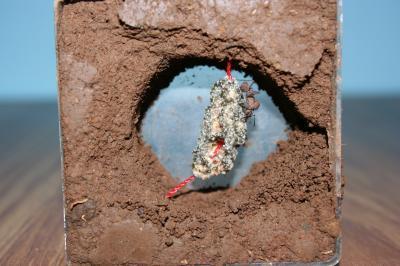According to a study by the Smithsonian Tropical Research Institute, ants rearing mushrooms have been cultivating mushrooms for nearly 50 million years. Each small ant princess carries a whole mushroom garden with him as he flies away to mate and establish a new nest. Short breaks in the relationship of ants to fungi during nesting can increase the strength of this long-term relationship.
Michael Poulsen, a short-term partner of the Smithsonian while still studying for a PhD at the University of Copenhagen, said: 'They were knocked down by a paradox that even when ants turned a single mushroom from this generation. to other generations, through the drives of different ants, and even a breed throughout central America sharing the same biologically similar fungi, this means there are changes going on between mushrooms from different drives'. He added: 'In these experiments, we realized that there is only a short amount of time - the time of the princess building a new nest - when the change of partner appears.'
The ants of the Acromyrmex genus grow only one fungus in their nests: Leucoagaricus gonglyophorus. Adult ant colonies contain a clone of asexual fungi - a single genotype that uses a variety of strategies to ensure that other fungi will not invade.
 The ants of Acromyrmex always start a new mushroom garden with fungi from their reproductive drive, but sometimes there is another asexual mushroom (Photo: Sophie AO Armitage)
The ants of Acromyrmex always start a new mushroom garden with fungi from their reproductive drive, but sometimes there is another asexual mushroom (Photo: Sophie AO Armitage)
The researchers also warn that some queens from different groups often build nests very close together and the researchers are wondering whether ants have brought mushrooms from one nest to their nests. - Do they nourish this fungus like their mushroom crop?
"That's exactly what happened," he added. "The little gods took one kind of fungus from another team and implanted it in their new nest. The temporary change of partners really acts as a safety and evolutionary network in the ant-fungal relationship by preventing the accumulation of harmful changes. '
The study was published in Evolution magazine, supported by the Smithsonian Tropical Research Institute, Lundbeck Foundation, the US National Science Foundation and the Danish National Research Foundation. Panama's National Environmental Agency grants permission.
References:
Michael Poulsen, Hermógenes Fernández-Marín, Cameron R. Currie, Jacobus J. Boomsma.Ephemeral Windows Of Opportunity For Transmission Transmission Of Fungal Symbionts In Leaf-cutting Ants.Evolution, 2009;DOI: 10.1111 / j.1558-5646.2009.00704.x
 'Fine laughs' - Scary and painful torture in ancient times
'Fine laughs' - Scary and painful torture in ancient times The sequence of numbers 142857 of the Egyptian pyramids is known as the strangest number in the world - Why?
The sequence of numbers 142857 of the Egyptian pyramids is known as the strangest number in the world - Why? History of the iron
History of the iron What is alum?
What is alum?